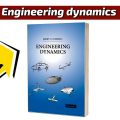Writing an engineering journal paper is quite complicated. Good knowledge is needed in this area. If any difficulties arise, you can enter in the search bar “I need a service to write my paper” and pay experts for writing your essays, research articles and other homework assignments in any discipline, including engineering.
This article is an ultimate guide to writing an engineering journal paper. We will concentrate mainly on issues of style and content since the questions of novelty and originality of the research are decided by the authors themselves. Using this guide,
Writers will be able to get a better idea about the quality of their papers, and thereby reduce the risk of frustration as a result of receiving a poor rating.
The Basic Structure of Engineering Journal Paper
Engineering journal paper typically includes the following sections:
- Foreword;
- Some general comments;
- Title;
- Abstract;
- Keywords;
- Nomenclature;
- Introduction;
- Description of the experimental program (material, samples, test procedure, results);
- Discussion;
- Conclusions;
- Bibliographic list;
- Concluding remarks.
How to Write an Engineering Journal Paper?
It is important to adhere to the basic structure of the paper and to comply with the requirements for writing each part of the work.
- Foreword. The preface is intended to prepare the reader for the rational use of published scientific information and a deeper, more conscious use of it.
- Some general comments. This part may contain some general comments of the writer. This part may also be missing.
- Title. The title should be as short as possible and reflect the content of the paper. Usually, the title should not have acronyms, as many of them are unfamiliar to most readers. This is especially true for acronyms invented by the author.
- Abstract. The abstract is a brief overview of the content of the paper and indicates the key issues addressed by the author, the approach to these problems and the achievements of the work. The abstract should also not contain acronyms; you cannot use them in the titles of sections. References to other works should be avoided in this part of the paper. Their place is in the main body of the text.
- Keywords. Keywords should reflect and cover the content of the paper. Their importance is often underestimated: keywords serve as the profile of your work for databases and therefore should be selected carefully.
- Nomenclature (list of symbols). For publications containing numerous formulas and, accordingly, mathematical symbols, a list of symbols must be attached. Otherwise, the reader always runs the risk of getting lost in the text. This list should be placed on the second page of your engineering paper.
- Introduction. This section contains mainly the motivation for your work. The existence of your paper implies that there is an unresolved or new scientific problem. In this case, you need to provide a brief presentation on the state of the industry with citations from relevant literature.
- Description of the experimental program (material, samples, test procedure, results). It provides a presentation of the objectives of the paper and describes the strategy used to achieve them. The best way to show results is to present them in the form of clear graphs. Typically, the results presented in the graphs do not need to be duplicated by tables. However, in some cases, it may be useful to present the results in the form of numbers, especially if they will be used for further calculations.
- Discussion. This section organizes and interprets the results.
- Conclusions. It is clear from the title of this section that here conclusions are drawn based on the results of the research work.
- Bibliographic list. Before compiling a bibliographic list, it is necessary to study the rules for making links in the publication.
- Concluding remarks. This section summarizes all of the above. You can put yourself in the place of the reader, and then you will have some questions about work. Try to answer them. For example: Why did I choose this problem? What I’ve done? What did I get as a result of my work? How to interpret the results?
Thus, try to take into account our recommendations and your engineering journal paper will be approved by the editor definitely.


